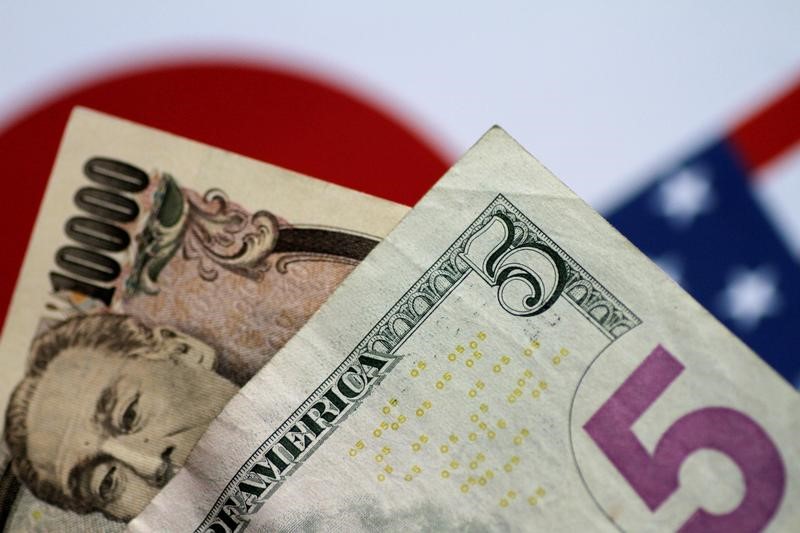Investing.com-- Most Asian currencies kept to a tight range on Tuesday amid caution before a string of economic signals this week, with the yen steadying amid uncertainty over a potential interest rate hike by the Bank of Japan.
The dollar recovered some ground as anticipation of a Federal Reserve meeting sparked some flows into the greenback, especially as traders speculated over whether the central bank will signal any rate cuts.
Broader Asian currencies remained on the backfoot, as concerns over slowing Chinese economic growth and uncertainty over the U.S. presidential race also weighed on risk sentiment.
Japanese yen steady, BOJ in focus
The Japanese yen steadied on Tuesday after strengthening sharply against the dollar over the past two weeks. The USDJPY pair hovered around 154 yen in morning trade.
Focus was squarely on a BOJ meeting, with analysts split over a potential hold or a 10-15 basis point hike by the central bank.
But apart from interest rates, the BOJ is widely expected to offer hawkish signals by signaling an end to its quantitative easing policy. The central bank had said during its June meeting that it would outline plans to phase out its asset purchase programs in July.
Any hawkish signals from the BOJ are likely to boost the yen further. BoFA analysts say USDJPY could drop as far as 145 on a hawkish BOJ.
Dollar steady, gains some ground before Fed rate decision
The dollar index and dollar index futures steadied on Tuesday after seeing some strength this week, with focus squarely on a Fed rate decision on Wednesday.
The central bank is widely expected to keep rates unchanged. But any signals on when it plans to begin cutting rates will be closely watched.
Soft inflation readings and dovish-leaning comments from Fed officials saw markets ramp up bets that the Fed will cut rates by 25 basis points in September.
But markets are also pricing in a small possibility of a similar cut on Wednesday.
Still, rate cuts bode poorly for the dollar, which was nursing a sharp tumble through most of July on this notion.
Broader Asian currencies moved in a flat-to-low range. The Chinese yuan’s USDCNY pair moved little, remaining close to eight-month highs amid persistent concerns over slowing economic growth in the country.
Purchasing managers index data for July is due on Wednesday, and is expected to provide more cues on business activity in the country.
The Australian dollar’s AUDUSD pair rose 0.1% but was also nursing steep losses through July, as a rout in commodity prices battered the currency.
The South Korean won’s USDKRW pair rose 0.2%, while the Singapore dollar’s USDSGD pair was flat.
The Indian rupee’s USDINR pair steadied after briefly touching record highs this week, with suspected intervention by the Reserve Bank of India offering the rupee some strength.
